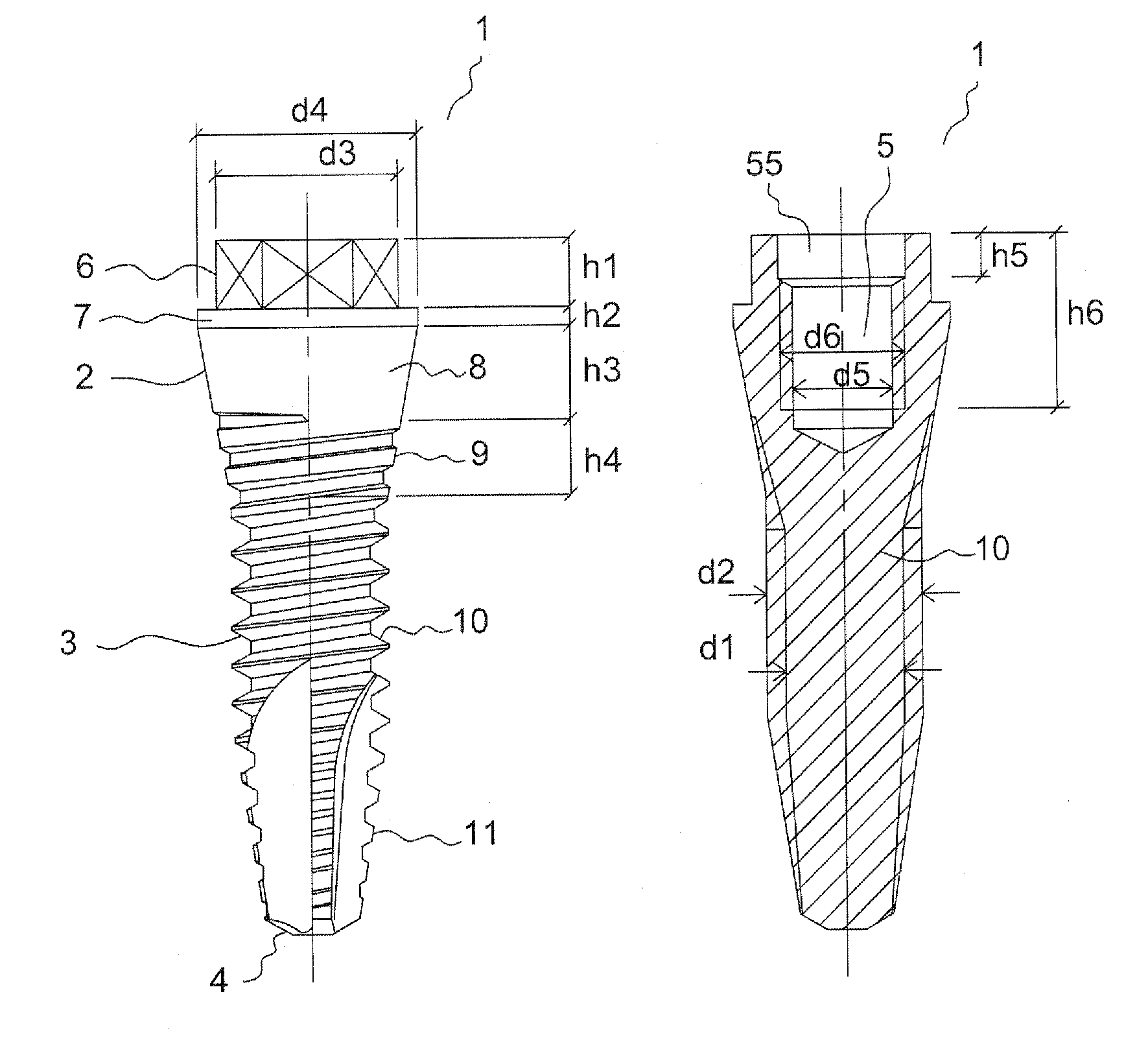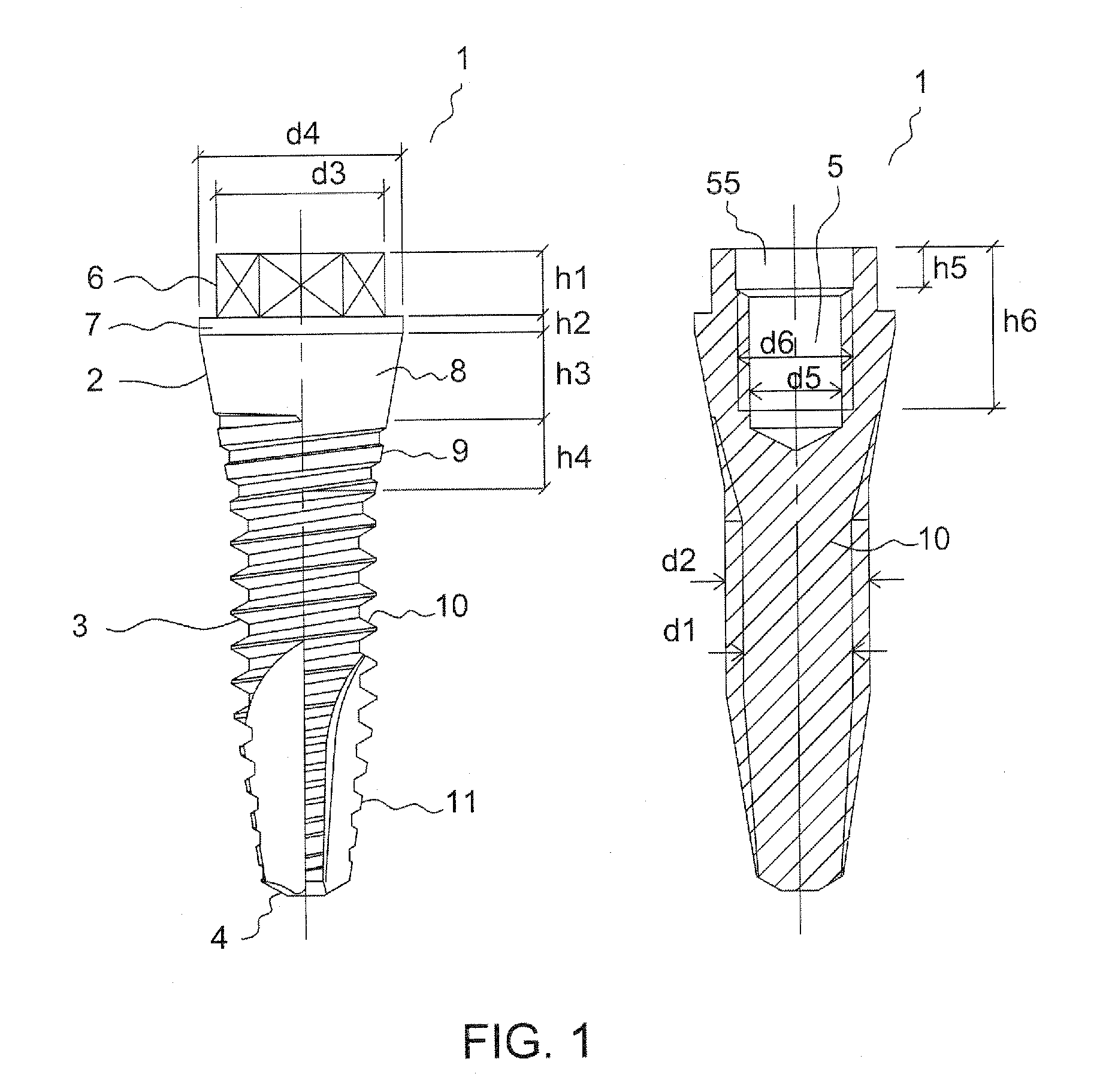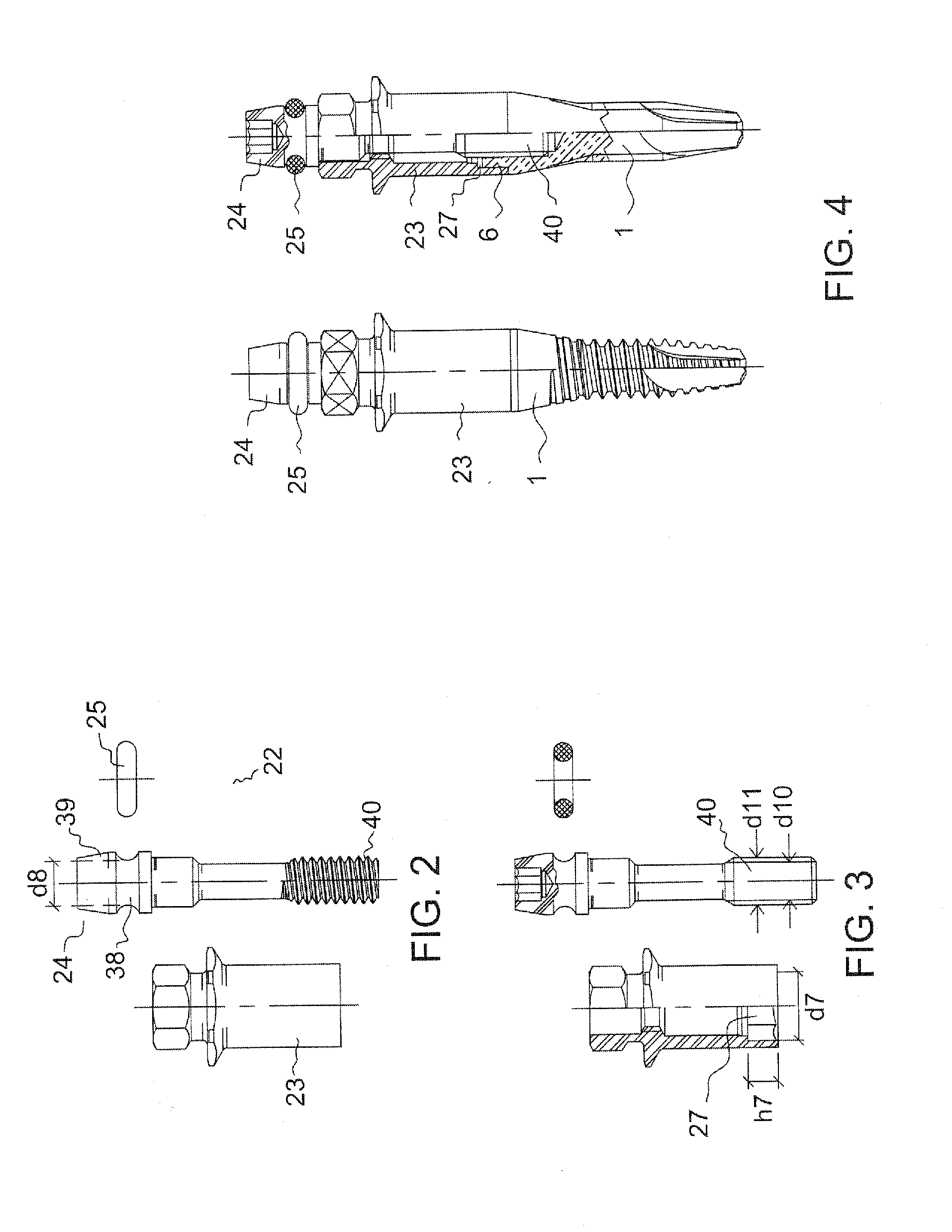Narrow Dental Implant and Associated Parts
a dental implant and a technology for reducing the diameter of the implant, applied in the field of dental implants, can solve the problems of insatiable use of implants with conventional diameters, inconvenient use of implants, and large external diameters for the requirements of applications
- Summary
- Abstract
- Description
- Claims
- Application Information
AI Technical Summary
Benefits of technology
Problems solved by technology
Method used
Image
Examples
Embodiment Construction
[0018]In order to achieve the aforementioned objectives, the invention defines a narrow dental implant and a series of associated components or parts related to said implant.
[0019]Similarly to conventional implants, the dental implant according to the invention comprises a head, a threaded body and an apical end or apex. The implant is solid and comprises a blind threaded hole for the connection of a screw. The dental implant according to the invention is categorised as ‘narrow’ because one of its essential innovative characteristics is that it presents a reduced thickness or diameter in comparison with prior art implants. This innovative characteristic is accompanied by other additional changes in the design of the implant, so that the reduction of the thickness of the implant does not reduce the implant's robustness, preloading capability, ability to prevent the appearance of breakage points, and other necessary qualities.
[0020]The narrow dental implant according to the invention ...
PUM
 Login to View More
Login to View More Abstract
Description
Claims
Application Information
 Login to View More
Login to View More - R&D
- Intellectual Property
- Life Sciences
- Materials
- Tech Scout
- Unparalleled Data Quality
- Higher Quality Content
- 60% Fewer Hallucinations
Browse by: Latest US Patents, China's latest patents, Technical Efficacy Thesaurus, Application Domain, Technology Topic, Popular Technical Reports.
© 2025 PatSnap. All rights reserved.Legal|Privacy policy|Modern Slavery Act Transparency Statement|Sitemap|About US| Contact US: help@patsnap.com



